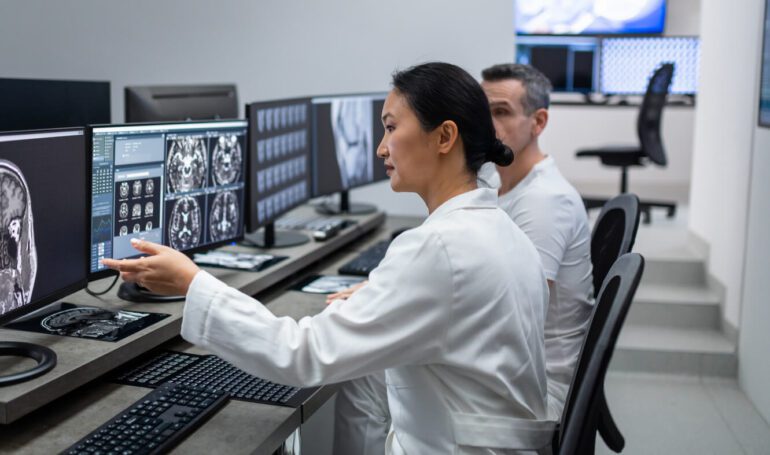- GPT-4 matches radiologists in detecting radiology report errors, as per recent research.
- Errors arise from discrepancies between residents and attending physicians, speech-recognition software inaccuracies, and physician workload.
- The study involved 200 reports with 150 inserted errors across common categories.
- GPT-4 achieved an 83% detection rate, comparable to radiologists’ performance.
- Dr. Roman J. Gertz highlights potential AI optimization for radiology workflow, ensuring accurate and prompt reports.
- One experienced reader outperformed GPT-4, but GPT-4 processed reports faster and at a lower cost.
- GPT -4’s efficiency suggests AI could enhance healthcare by improving diagnostics.
Main AI News:
A recent study reveals that GPT-4 demonstrates an equivalent capability to identify radiology report errors as specialists in the field, as per recent findings released on Tuesday.
Errors in radiology reports often stem from discrepancies between residents and attending physicians, inaccuracies in speech-recognition software, and the heavy workload of physicians, as highlighted by experts in Radiology. To evaluate the effectiveness of the large language model (LLM) in error detection, researchers collected 200 reports, including X-rays and cross-sectional CT/MR imaging, from a single institution. Within these reports, they inserted 150 errors across five common categories, such as omission and spelling errors, and tasked both GPT-4 and six radiologists with identifying them.
The study revealed that GPT-4 matched the performance of radiologists, irrespective of their experience levels, achieving a detection rate of almost 83%, compared to 89% for senior readers, 80% for attending physicians, and 80% for residents.
Dr. Roman J. Gertz, lead author and resident in the Department of Radiology at the University Hospital of Cologne, Germany, noted in an April 16 announcement from RSNA that, “This efficiency in detecting errors may hint at a future where AI can help optimize the workflow within radiology departments, ensuring that reports are both accurate and promptly available, thus enhancing the radiology department’s capacity to deliver timely and reliable diagnostics.”
The physicians involved in the study comprised two senior radiologists, two attendings, and two residents. Notably, one experienced reader surpassed GPT-4, achieving a detection rate of nearly 95%. However, GPT-4 exhibited a shorter processing time per report compared to the fastest human radiologist in the study, averaging about 3.5 seconds versus 25 seconds. Moreover, the utilization of GPT-4 led to a lower average correction cost per report than the most cost-efficient radiologist, approximately $0.03 versus $0.42.
Dr. Gertz emphasized, “Ultimately, our research provides a concrete example of how AI, specifically through applications like GPT-4, can revolutionize healthcare by boosting efficiency, minimizing errors, and ensuring broader access to reliable, affordable diagnostic services—fundamental steps toward improving patient care outcomes.”
Conclusion:
The emergence of AI models like GPT-4, matching radiologists in detecting report errors, signifies a significant shift in healthcare. It indicates the potential for AI to optimize radiology workflow, improving efficiency and accuracy while reducing costs. This development underscores the increasing role of AI in enhancing diagnostic services and ultimately improving patient care outcomes. Businesses in the healthcare sector should explore integrating AI technologies to stay competitive and provide higher quality services.

